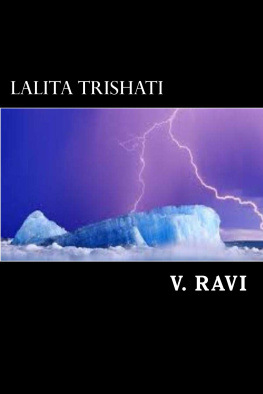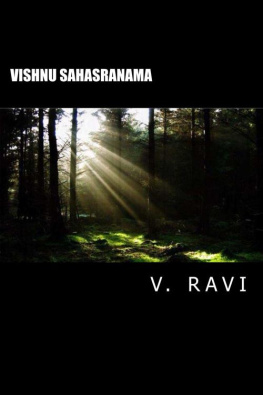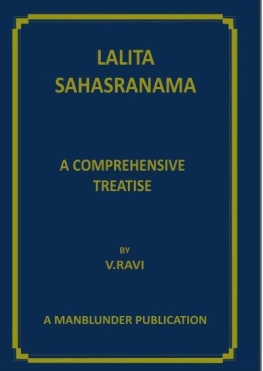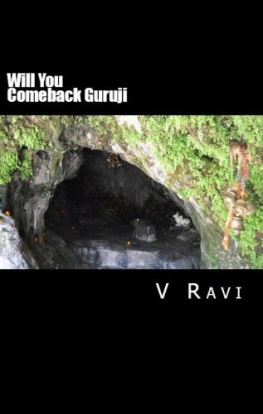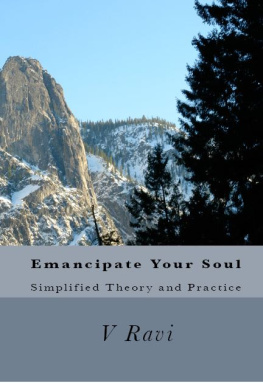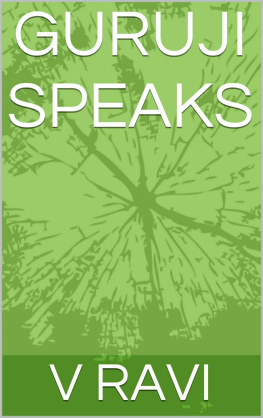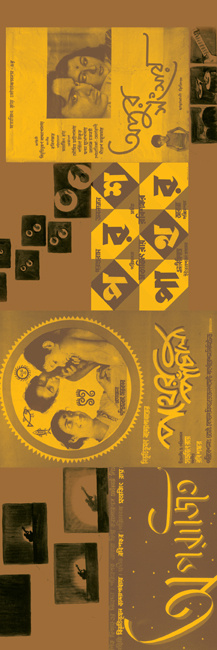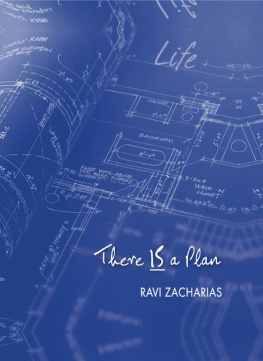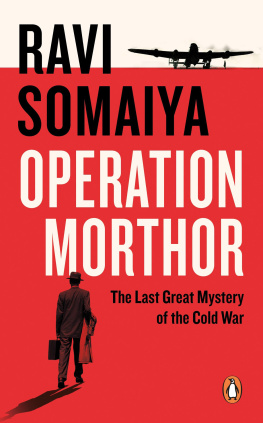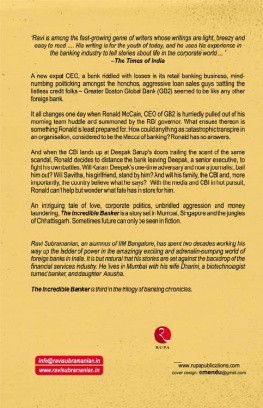V RAVI - Lalita Trishati
Here you can read online V RAVI - Lalita Trishati full text of the book (entire story) in english for free. Download pdf and epub, get meaning, cover and reviews about this ebook. year: 2013, publisher: A MANBLUNDER PUBLICATION, genre: Children. Description of the work, (preface) as well as reviews are available. Best literature library LitArk.com created for fans of good reading and offers a wide selection of genres:
Romance novel
Science fiction
Adventure
Detective
Science
History
Home and family
Prose
Art
Politics
Computer
Non-fiction
Religion
Business
Children
Humor
Choose a favorite category and find really read worthwhile books. Enjoy immersion in the world of imagination, feel the emotions of the characters or learn something new for yourself, make an fascinating discovery.
Lalita Trishati: summary, description and annotation
We offer to read an annotation, description, summary or preface (depends on what the author of the book "Lalita Trishati" wrote himself). If you haven't found the necessary information about the book — write in the comments, we will try to find it.
Lalita Trishati — read online for free the complete book (whole text) full work
Below is the text of the book, divided by pages. System saving the place of the last page read, allows you to conveniently read the book "Lalita Trishati" online for free, without having to search again every time where you left off. Put a bookmark, and you can go to the page where you finished reading at any time.
Font size:
Interval:
Bookmark:
A COMPREHESNIVE TREATISE
BY
V. RAVI
A MANBLUNDER PUBLICATION
All rights reserved. No part of this book may be reproduced, stored in retrieval system or transmitted, in any form or by any means,electronic,mechanical,photocopying,recordingorotherwisewithout the written permission from the author, except for briefpassages quoted in reviews or critical articles.
Date of Publication: March 29, 2013Published by:
Manblunder Publication,Chennai, India.
Web: www.manblunder.comEmail: ravi@manblunder.com
Uttarabhga - Phalaruti203
Nma-s in serial order208
INTRODUCTION
r Lalit Triat, like Lalit Sahasranma is discussed in Lalitopkhyna of Brahmapura,whichis in the form ofconversation between r Hayagrva (an incarnation of Viu and isconsidered as the presiding God for knowledge) and sage Agastya,who is a great worshipper of Parakti, through his own Pacadamantra (ka e la hr | ha sa ka ha la hr | sa ha sa ka la hr ||
- this is different from theregular Pacada mantra (composed by Manmatha, who is also known as Cupid). Triata means three hundred.
r Lalit Triat consists of three hundred nma-s, carved out offifty nine couplet verses. r Lalit Devi has four forms grossform, Kmakal form, Kualin form, and mantra form.All theseforms are explained in Lalit Sahasranma such as kmakal rp(322), kualin (110), mantra-sr (846), mahmantr (227). She isworshipped in various gross forms such as Kl, Tr, Gyatr (420), Mahlakm (210), etc. Kmakal is Her subtler form, where Sheremains intimately with iva. Her kualin form is the subtlest ofall and if She is made to ascend, She rushes to the top of the head,sahasrra, where She spends intimate moments with Her Lord iva.WorshippingHermantraformis known as r Vidy. Sherepresents all letters and words in the form of abdabrahman (LalitSahasranma 204 sarvamantra-svarpii). Each of Her gross form,such as Kl, Tr, etc as mentioned in Daamahvidy, isworshipped with different mantras and these worships are known as Tantra-s.
PACADA MANTRAThe main mantra of Lalitmbik is Pacada which consists offifteen bja-s. A bja-s need not be a single Sanskrit alphabet.Itcould be a combination of alphabets. For example, sa is a bja and it is a single alphabet, whereas h is also a bja but a combination of many alphabets. Each alphabet in Sanskrit has a meaning. If wetake the first letter a () in Sanskrit alphabet, it conveys many
things.It is the origin of (OM); it also means unification, nondestruction, etc. The interpretation of meaning for such bja-s mostly depends on the context in which it is used. Pacadaa meansfifteen. Since this mantra has fifteen bja-s, it is called as Pacada. Pacada mantra consists of three groups consisting of bja-s and each line is called ka or group.The three ka-s are known asvgbhava ka, kmarja kt or madhya ka and akti kt.Vgbhava karepresents Lalitmbiks face, kmarja ka represents the portion between Her neck and hip and the last oneakti ka represents the portion below Her hip. The whole form ofLalitmbik is made up of these three ka-s.This is one of thereasons why Pacada is considered as very powerful. These threeka-s are joined in such a way that an inverted triangle is formed which represents Her yoni, the source of the universe. This is why this mantra is considered as highly secretive. Vgbhava ka is theright side of this triangle, kmarja ka the upper side and aktika forms the left side of the triangle.
Vgbhava ka consists of five bja-s viz. ka-e-lahr (---). Madhya ka consists of six bja-s viz. ha-sa-ka-ha-lahr (----).akti ka consists of four bja-s viz. sa-ka-lahr (--). Thus, we have fifteen bja-s of Pacada.This mantra is not revealed by these bja-s, but by the following verse in Sanskrit.
kmo yoni: kamal vajrapirguhhas matarivbhrmindra|punarguhsakala myay ca purucye vivamtdividy||:
This is the verse where in the fifteen bja-s of Pacada are hidden.This is a clear indication of the highly secretive nature of thismantra.From this verse, the fifteen bja-s of Pacada are arrived thus. kman (ka) yoni: (e) kamal ()vajrapni (la)guh (hr) ha(ha) s (sa) mathariv (ka) abram (ha) indra (la)|punar (punarmeans again) guh (hr) sakala (sa,ka,la) myay ca (hr) purucye vivamtdividy.
The first ka has five bja-s ka-e -la hr. The entire three ka-send with hr and this hr is called hllekha.A lot of importanceis attached to this hllekha which is also called as my bja.Vkbhava ka is also known as agni khaa and indicates jnaakti of Lalitmbik.Ka means Brahma, the creator. e meansSarasvat the goddess of jna. means Lakm, la means Indra and hr means the merger of iva and akt. The bja ka is the root ofkma bja kl ().ka also bestows peace and prosperity to thesdaka. The next bja e prevents misfortunes to the sdaka. bestows wealth and all good things to sdaka. The bja la givesvictory to the sdaka. Thus, the first four bja-s give peace,prosperity, prevention of misfortunes, auspiciousness and a statuslike Indra. This means victory to sdaka in every step he putsforward.(Indra is the chief of all gods and goddesses and isvictorious in all the battles against demons).
hr is made up of twelve components. H + r + + m and a bindu.Bindu is a dot on the letter m ().But this is not just a dot.Thisdot comprises of ardacandra, rodhin, nda, ndnta, akti, vypik,saman and uman.Beginning from bindu and including theseeight, is nda (total nine).This nda comprises of two V-s oneabove the other (each V has two lines and two V-s together havefour lines) and four dots each at the open ends of V and one dot on the top these four dots. This is the combination of bja hr. Morethan these V-s and dots, the pronunciation is important.There arespecifications of length of timing for pronunciations of each bja.The entire ka should be pronounced in eleven mtr-s (a mtr is the time taken for a winking, possibly lesser than a second).Thereare guidelines for pronouncing the bja-s.The pronunciation ofVkbhava ka should commence from mldhra cakra and end atanhata cakra, contemplating the entire ka as the fire.
The second ka is kmarja ka or madhya ka is to be meditated upon Lalitmbiks neck to hip. This ka has the highest numberof bja-s, six.They are ha-sa-ka-ha-la hr.Out of these, ka, laand hr have been discussed in the first ka, leaving two new bja-s in this ka. Out of the new bja-s, ha has been repeated twice.Thefirsthameans iva; the second ha means k element(Saundarya Lahar (verse 32) refers this second ha as the sun) and sain this place means Viu.With reference to the five basicelements, sa means air element. The bja ha is also known aseunuch bja. Probably this is the reason why the bja hr refers to the unionof ivaand akt.In the first ka, Brahmawas mentioned, as the first ka refers to creation.In this ka ofsustenance, Viu is mentioned as He is the lord of sustenance.This ka should be pronounced in a time frame of 11.50 mtr.This ka is to be contemplated from anhata cakra to j cakra in the form brightness that is equivalent to millions of suns. This kais also called srya khaa and forms the second act of Brahman viz. the sustenance.Since it is associated with sustenance, desire isattached to this ka.
The third and the last ka which is called akt ka, has only fourbja-s.This ka is to be meditated upon the portion between hipand the feet of Lalitmbik. The four bja-s are sa-ka-la hr. Thefirst ka has five bja-s, second ka six bja-s and the third has only four bja-s.Possibly this could mean that sustenance is themost difficult act and dissolution is the easiest act. Vkbhava karefers to subtle intellect, kmarja ka refers to preponderance ofvalour, wealth, fame, etc and the third ka, the akti ka expandsthe conveyance of the previous two ka-s. It can be noticed thattwo ha bja-s in the madhya ka is removed in this akt ka. Thiska is to be pronounced in a time frame of eight and a half mtr-s.The entire Pacada mantra should be pronounced in thirty onemtr-s. In the case of continuous recitation of this mantra, withoutleaving time gap between the ka only twenty nine mtr-s areprescribed.But the time factor does not apply when the mantra is recited mentally.This ka is to be contemplated from anhatacakra to the middle of the forehead in the forms of brightnesscomparable to the millions of moons.There are nine stages fromanhata to the middle of the forehead. These nine stages are nothing but the nine components of nda which was discussed under hr.This ka is called chandrakhaa and forms the third act ofBrahman, the dissolution. The dissolution is represented by the bjla which means the destructive weaponries viz. vajra (thunderbolt), cakra (the wheel. Possibly meaning the Sudarana cakra ofViu), trila or trident of iva and the gada of Viu.There arethree hr-s in Pacada each representing creation, sustenance and dissolution.
Font size:
Interval:
Bookmark:
Similar books «Lalita Trishati»
Look at similar books to Lalita Trishati. We have selected literature similar in name and meaning in the hope of providing readers with more options to find new, interesting, not yet read works.
Discussion, reviews of the book Lalita Trishati and just readers' own opinions. Leave your comments, write what you think about the work, its meaning or the main characters. Specify what exactly you liked and what you didn't like, and why you think so.

